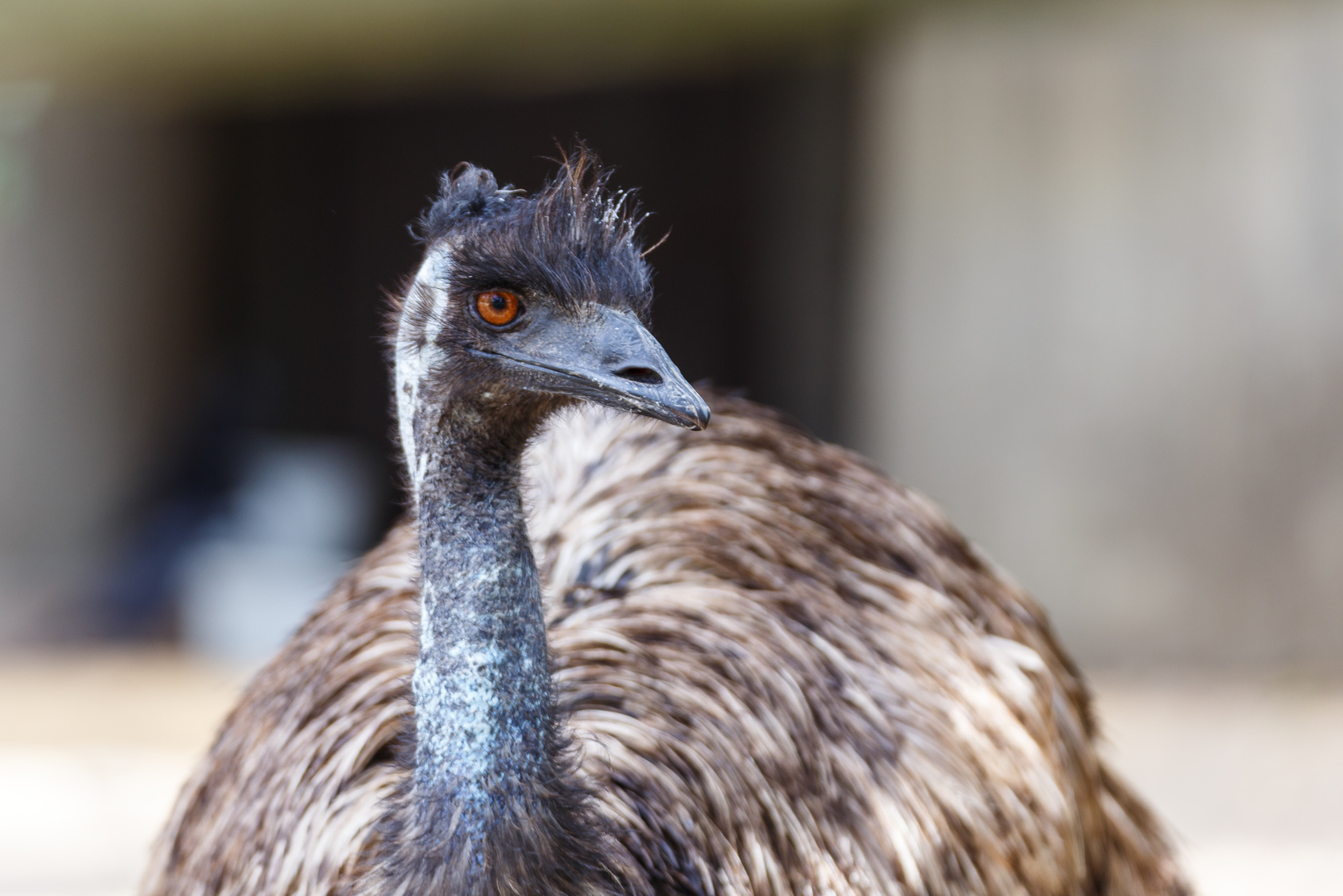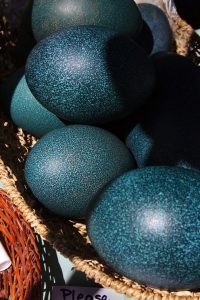About Emus… – brochure
Click here to print the pdf brochure
Facts for the Teacher

- Emus have been in Australia fr over 80 million years.
- Emus are members of the ratite family of birds, along with ostrich, rhea, cassowary and kiwi.
- Ratites have flat breastbones and no wing muscles, do they cannot fly.
- Emu are cursorial. They have developed strong legs for running. An emu can run 40 miles per hour for short distances. All ratites are cursorial.
- Emus have 3 forward pointing toes; the underside of each is flat with a broad pad.
- Emus have interesting calls, a throbbing drum (by the female) and a grunt (by the male). The chicks will whistle and the male will whistle to them.
- The emu has a pad of fat on the back. Because the fat is all in one place instead of being spread throughout the body, the meat is very lean.
- Emu feathers are unique because both the primary and secondary feathers are the same length. Each feather has two shafts, with barbs so widely spaced that they do not interlock to form a firm vane as in most birds; instead they form a loose, hair like body covering.
- Emus lay an egg every 3 to 5 days during the breading season. Breeding season runs from October through April in the United States.

Emu Eggs are dark green. The female lays an egg every 3-5 days. As she lays the eggs, the male will cover them with leaves, grass, straw or whatever is available until he is ready to start incubating them. When there are at least 9 eggs, the male will start sitting on the nest. The male will incubate the eggs for 52-56 days. He will not eat or drink during this time. When the eggs hatch, the first thing he will do is eat the eggshell. This helps to get his system going, and also hides evidence of the chicks from predators. The chicks will stay with their daddy until they are grown. On farms, the eggs are usually picked up by the farmer and put in an electric incubator. If the father is allowed to hatch, he is provided with food and water.

Emu Chicks are cream colored with brown and tan stripes. As they get older, they lose their stripes. By the time they are 6 months old, they will be a chocolate brown color. By the time they are 2 years old, they will have lost the chocolate brown colored feathers in favor of the lighter colored feathers of the adults.
Emus originated in Australia, but are now raised on farms throughout the United States for their lean red meat and other food by products products…
In the wild, emus eat fruits, flowers, insects, seeds and green vegetation; they love caterpillars. To aid in the digestive process, they will swallow large stones. They need water daily.
On American farms, emus are fed a special pelletized feed that has all the nutrients they need to develop strong, healthy bodies. Emus grow to be between 5 1/2 to 6 feet tall and weigh 110 to 120 pounds.

Every part of the emu is used.
- Meat is eaten.
- Feathers are used in fashion or crafts.
- Hide and Leg skins become leather.
- Fat becomes emu oil and used in health and beauty products.
- Claws are used in jewelry and crafts.

Founded in 1989, The American Emu Association is a non-profit trade association representing breeders, producers and marketers of emu meat, oil and other emu co-products. The emu industry is an alternative agricultural industry, dominated by the small farmer, who is devoted to humane and environmentally positive practices that will produce beneficial products for society. For more information about the American Emu Association (AEA) or the emu industry visit https://aea-emu.org